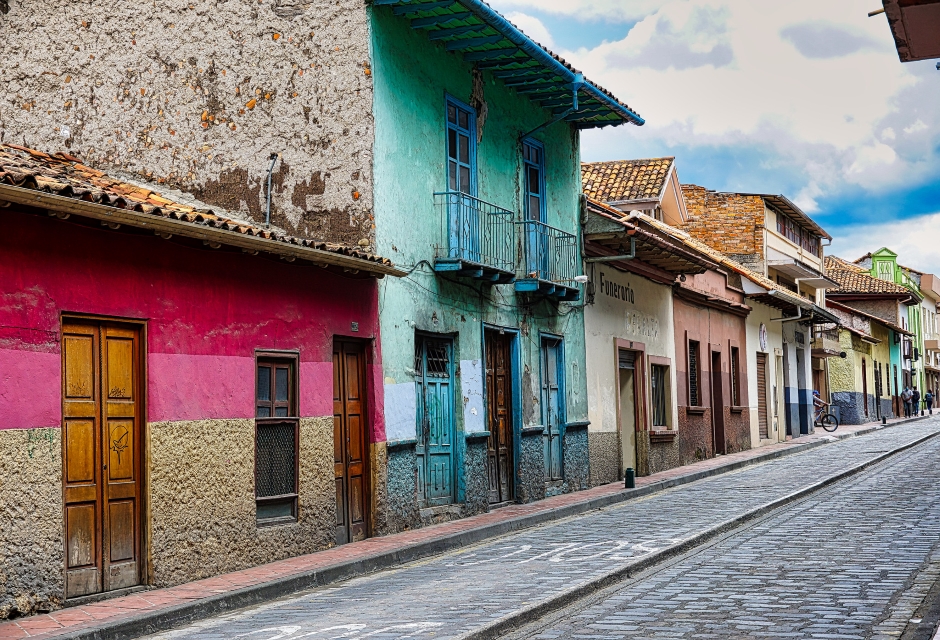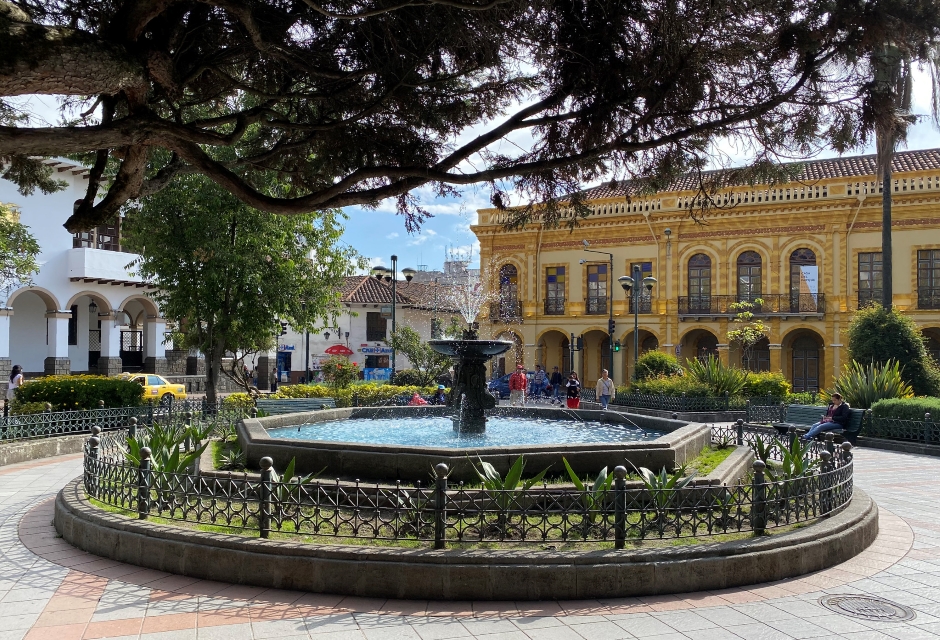Historic Centre of Cuenca
charming churches, cobbled streets, and colonial houses
Country: Ecuador | Type: Cultural | Theme: Colonial, Urban Landscape
Introduction to the Historic Centre of Cuenca
The city of Cuenca, also known as Santa Ana de los Cuatro Ríos de Cuenca, is the third largest city in Ecuador with a population of around 500,000. It serves as the capital of the Azuay province and is situated in the Andes Mountains at an elevation of approximately 2,500 meters above sea level. Cuenca is located about nine hours south of Quito, the country’s capital, and four hours west of Guayaquil.
The city center of Cuenca is recognized as a UNESCO World Heritage site due to its numerous historic landmarks. Cuenca is renowned for its two universities and attracts many foreign tourists who often return to live there. The larger of the two universities, Universidad de Cuenca, is a public university with over 12,000 enrolled students. The name “Cuenca” refers to the confluence of rivers
Cuenca is the most charming of all the cities and towns in Ecuador. Located in the heart of the Andes Mountains the city has centuries-old cathedrals, beautiful cobblestone streets, museums and galleries, a myriad of the tree-lined plazas, and best of all warm and friendly people. Capital of the Azuay province and the third largest city in Ecuador, the city is a UNESCO World Heritage Trust city because of its richly preserved history. The city, even though it is Ecuador’s third largest, still feels like an old-world town.
The climate in the region is excellent year-round due to the altitude (8,200 ft above sea level), with days in the upper 70s and nights in the 50s. Of course, like most of the region, there is a rainy season and a dry season. The rainy season is from mid-October to the beginning of May but do not worry, even though it is the rainy season, the days are normally sunny and the afternoons and evenings are rainy, but not continuous.
The city has become a haven for foreigners to visit and often times return to live. Recently it was named one of the top five destinations in the world for retirement living. Here you will find ex-pats from all over the world because of the excellent year-round weather, inexpensive cost of living, great healthcare, low-cost housing, and rich cultural environment.
One beautiful area not to miss is Parque Calderon the city’s largest plaza. Street vendors merrily hum away as they push their wares, musicians play to their own beat and photographers ask anyone and everyone if they want their pictures taken. Standing majestically over the plaza is the Inmaculada Concepcion Cathedral. The new construction on the cathedral started in 1885 to replace El Sagrario which was located on the other side of the plaza and dated back to the mid-1500s.
Most visitors like the historic area that encompasses the UNESCO World Heritage Site. The area is between Tomebamba River and Gran Colombia Street on the north side, and to the west General Torres and Hermano Miguel on the east. The grid layout, compactness, and easily identifiable monuments attract many.
Cuenca like all Latin American cities and towns, celebrates a number of festivals like the Mass of Children on the Day of Kings on January 6th, and the city’s Independence Day in November that has cultural acts, processions, and dances.
Studies through archeological discoveries say the first to inhabit the area goes back to 8000 BC. They were hunters and are evidenced by the tools like spears and arrows that have been found in the area. Later the indigenous population took advantage of the stable climate, abundant water, and fertile soil to develop agriculture.
Cuenca was originally settled by Canari and called Guapondeleg and was founded about 500 AD. Roughly translated Guapondeleg means land the size of heaven. About 50 years prior to the Spanish arrival, the Incas conquered the area and occupied Guapondeleg. Even though the Inca changed the architecture they did not stop the Canari from continuing their successful astronomical and agricultural achievements.
But when the Spanish came along the city was in ruins after having been abandoned by both the Canari and Incas. Some say it was the mythical city of gold and the Spanish thought it may have been destroyed by its inhabitants when they heard about the Spanish conquests.
Cuenca was founded by the Spanish on April 12, 1557, by Gil Ramirez Davalos. The town was named after the hometown of Andres Hurtado de Mendoza the then Viceroy of Peru. The settlement came decades after others such as Quito, Guayaquil, and Loja. Cuenca was declared independent on November 3, 1820.
The bus station in Cuenca is named Terminal Terrestre and is very clean and organized. It is on Avenida Espana in the northeastern part of the city. The station is about a 20-minute walk from the historic center. There are daily arrivals and departures to major cities like Quito and Guayaquil. The ride to Guayaquil is 240 km and takes about 4 hours, while Quito the capital is 500 km and that ride is close to 10 hours riding south on the Pan American Road.
The airport is Aeropuerto Mariscal Lamar and is east of the bus station. It is only five minutes from the bus station and a brief taxi ride from most hotels in the area. Four major airlines fly to Cuenca; TAME, AeroGal, AirCuenca, and LAN Ecuador.
Key Facts
Inscribed: 1999
Nearest City: Cuenca
Province: Azauy
Coordinates: Lat: -2.8833, Long: -78.9833
Accessibility: Easy
Services: Extensive
Highlights
- Iglesia de El Sagrario (Old Cathedral) built in 1557
- Catedral Metropolitana de la Inmaculada Concepción
- Monastery and Museum of La Concepcion
- Church of Santo Domingo
- Park Abdon Calderon in center of Cuenca
- Ruins of All Saints with four niches of Inca origin
Find a Tour
Like to visit? Fill out this form and reliable local hospitality companies will contact you to discuss your ideas.



